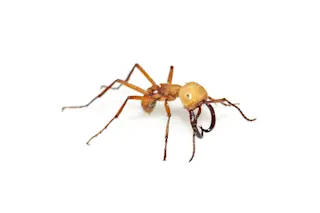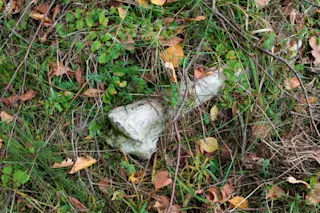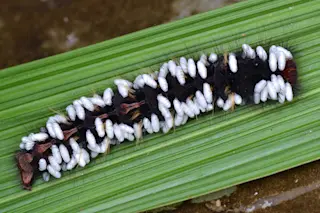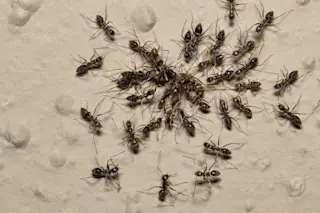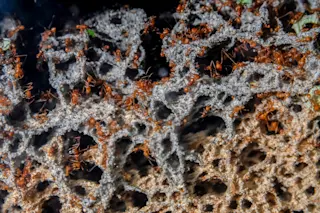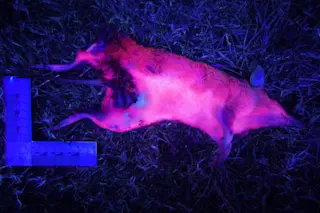Eciton army ants are so named because of their military-like foraging tactics in which vast numbers simultaneously swarm over an area the size of a football pitch, ruthlessly devouring their prey, mainly other ant species and wasps. The thoroughness of these “raids” prevents army ant colonies returning to the same area. So the colonies — some 200,000 individuals — must be constantly on the move.
That raises the problem of where to nest and army ants have come up with a unique solution. They use their own bodies to create complex nests called bivouacs, large conical structures that hang from trees or sit inside rotten logs. Every 20 days or so they up and move to a new location, reforming their nest when they get there.
Bivouac construction is an extraordinary example of self-assembly. Inside them, the colony protects its queen, cultivates eggs and allows larvae to hatch. This requires ...


